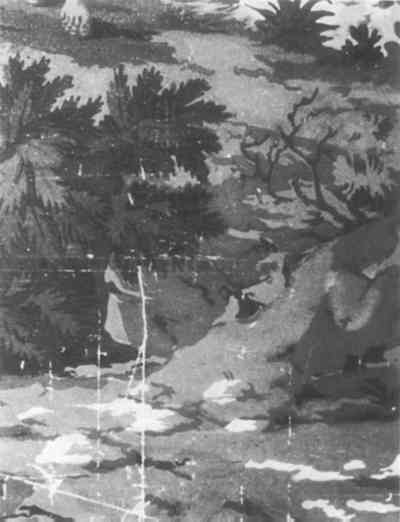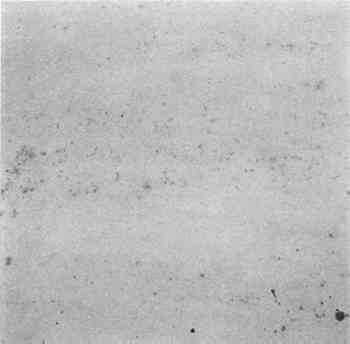CONSERVATION OF SCENIC WALLPAPERS: SAUVAGES DE LA MER DU PACIFIQUERobert Futernick
3 CONDITIONTHE WALLPAPER had been rolled and placed in storage for many years. Although this measure protected the pigments from light damage, horizontal crack patterns with associated flaking media resulted from the strain caused by the rolled position. Additional cracking of the thick and brittle design coating was apparent on most of the panels (Fig. 1). Handling may have caused this condition, but the differential responsiveness of the thick media and its paper support to changes in humidity created the propensity for damage.
Examination of the reverse of the wallpapers indicated extensive mold staining (Fig. 2). In certain heavily affected areas, discoloration had migrated from the paper, becoming visible in the design. Both the material used as a pigment binder and the paper support itself provided nutrition for the mold growth which was especially stimulated during periods of warm temperatures and high humidity. Additional darkening and soiling was apparent on the surface, resulting from periods of direct exposure to the atmosphere. The paper and water-based pigments
Weakness of the paper was also noted upon examination. This condition is to be expected as any paper ages, but the incidence of mold increased the rate of degradation; and when paper is weak, it is more prone to mechanical abuse. Most of the eighteen panels had suffered multiple tears and small paper losses. |

